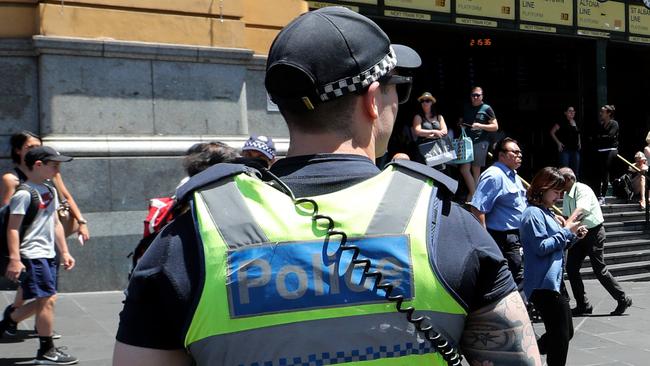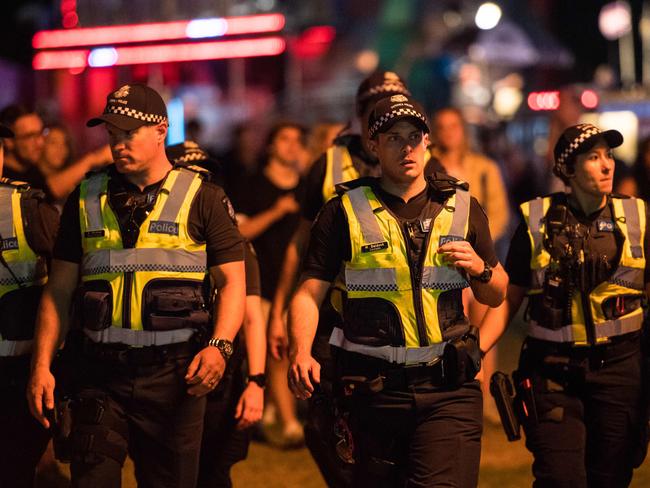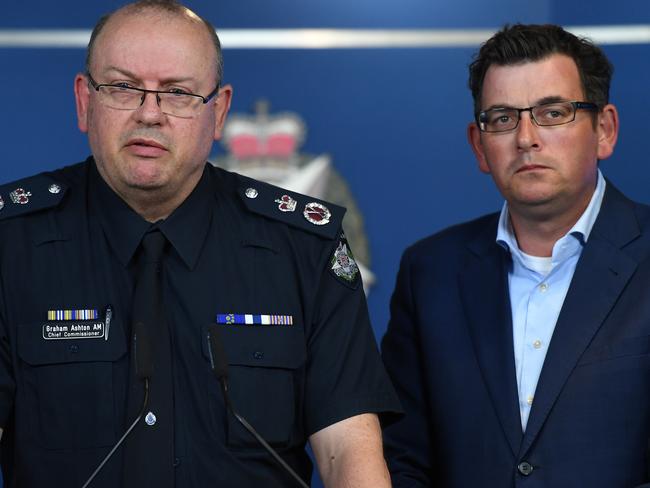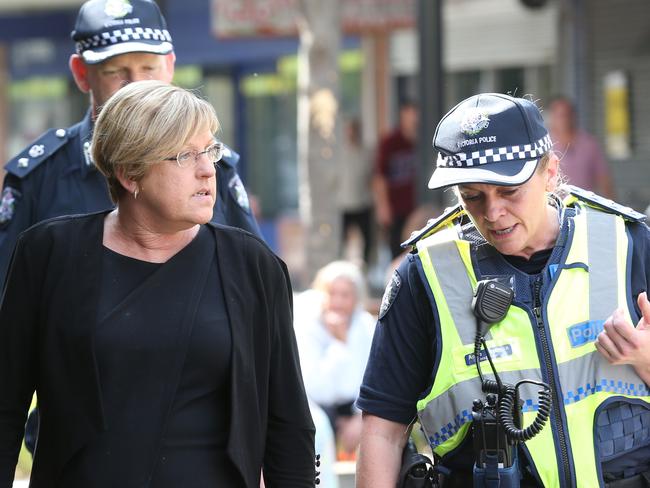Former police officers unveil plan to counter Victoria’s crime crisis
POLICE would be forced to meet strict response time targets for high-priority jobs such as carjackings and home invasions as part of an overhaul put forward by a group of former high-ranking officers.

Law & Order
Don't miss out on the headlines from Law & Order. Followed categories will be added to My News.
- Bold direction for blue line
- Daytime train station crime on the rise
- Rita Panahi: Tougher approach is long overdue
- Police hunt for brazen armed bandits
POLICE would be forced to meet strict response time targets for high-priority jobs such as carjackings and home invasions as part of an overhaul put forward by a group of former high-ranking officers.
The installation of nudge bars on police cars to aid in pursuits and GPS trackers fitted to all new vehicles to cut crime form part of a new 100-point plan to tackle the state’s law and order crisis.
A Youth Command department would also be created to focus on young offenders and immigration officials would be allowed to deport people after they were arrested but before their court cases were finalised under the radical plans put forward by the Community Advocacy Alliance (CAA).
The response times benchmarks — already used in NSW — follow concerns that overworked officers are struggling to keep up with Victoria’s crime crisis.
Retired Victoria Police chief commissioner Kelvin Glare is head of the group and has the backing of the state Opposition.
The CAA will today unveil its proposals to Opposition Leader Matthew Guy at Parliament House.

The blueprint, which expands on an earlier draft revealed by the Herald Sun this year, also suggests bringing in measures to make individual police officers more accountable.
Mr Glare said: “There is something radically wrong with what is happening in policing in Victoria.
“I can’t for the life of me understand why there isn’t some tracking of how long it takes to get to jobs.
“If the system needs changing to see that those jobs take precedence and get urgent attention and rapid attention, then that’s what needs to happen.”
Mr Guy has backed the group, which also counts former police chiefs from Queensland and Tasmania as members.
“The justice system is broken and we need to make changes starting with mandatory sentencing for repeat violent offenders to make our streets safe,” Mr Guy said.
“While Daniel Andrews keeps defending the current system, I’m prepared to listen to others with other ideas on how to fix it.”

Edward O’Donohue, the Opposition’s police spokesman, said: “Bringing together hundreds of years of collective policing experience, the CAA’s 100-point plan is a detailed blueprint for reform that should be given serious consideration by Daniel Andrews and Victoria Police.”
Under the CAA plan, response times, like those for paramedics, would be made public.
“We’re called dinosaurs that don’t understand modern policing,’’ Mr Glare said. “But our reply to that is if modern policing in Victoria has got us to the state we’re in today, then maybe it’s time that police in Victoria take a look.”
Inspector Ian Geddes, of Victoria Police, said: “The Community Advocacy Alliance are entirely entitled to their views; this does not, however, mean that Victoria Police agrees with them.
“Victoria is vastly different today compared to the early 1990s. Today’s frontline police are getting the training and equipment they need to stay contemporary and deal with a much more complex policing environment.”

Minister for Police Lisa Neville said the government’s 2016 Community Safety Statement addressed some of the issues raised by the CAA.
She said her office had an ongoing dialogue with the CAA. The Herald Sun understands there are several proposals put forward by the CAA the government does not agree with.
“The 2016 Community Safety Statement, released in December, was the result of many months of work with Victoria Police — from command to officers on the frontline — and consultation with the Police Association and listening to the Victorian community,” she said.
“The statement — a $2 billion package with 3135 new police officers over five years — outlines a comprehensive strategy to prevent, detect and disrupt crime.
“To create safer communities for all Victorians, we are ensuring Victoria Police have the resources on the ground, modern equipment to meet the demands of 21st century policing, and tough new laws dealing with carjacking, home invasions and drive-by shootings.
“We will be calling on all Victorians to have their say shaping community safety priorities. We want to know what changes all Victorians want to see.”
PLAN 100
More accountability
Tasks are currently and traditionally allocated to crews by vehicle call signs rather than to individual officers. Allocating a task to a specific officer will identify how well officers are performing.
Response time benchmarks
Urgent need to establish benchmarks for standard response times for high-priority jobs.
Immigration
Ensure non-Australian citizens coming to police notice are also brought to the attention of immigration authorities. The CAA wants to examine and develop legislative change that will allow immigration authorities to intervene in non-capital offences at a time when the offender is arrested.
Super stations
Dispense with the super stations concept and focus again on local stations servicing communities.
Modify role of Local Area Commanders and Station Commanders
Commanders should place random phone calls to victims of crime to assess the performance of individual police officers.
Victims information
Keep victims better informed about how an investigation progresses.
Broken Window Philosophy
Adopt New York-style philosophy. New York City underwent a massive transformation from a crime-ridden city to a clean one in the 1990s, when graffiti and broken windows were regarded as criminal activities.
G-Tag
The CAA advocates for GPS tracking to be installed in new cars to dramatically cut vehicle and other crime.
Task group re-evaluation
Reassess all special task groups and task forces.
Downgrade statistical influence
Downgrade the influence of statistical gathering and tasks by statistics and leave orders to station and unit commanders.
Force reserve unit
Establish a reserve unit for Victoria Police where underperforming officers are transferred.
One up patrols
Investigate the feasibility of patrols with one officer. Will allow more patrols and the impact of having two officers arriving at an incident in two police cars is magnified.
Drug testing
More rigorous random illicit drug testing should be carried out on police officers.
Youth Command
Introduce a Youth Command to deal with the problem of youth crime in Victoria.
Police fleet/ driving
Nudge bars added to police cars to help in pursuits and also to act as a deterrent. Train more police on driving techniques to use in pursuits.
Highway Patrol
To be divided into two — Highway and Metro.
Disqualified drivers
To be arrested and immediately jailed for one month if detected driving while disqualified.
